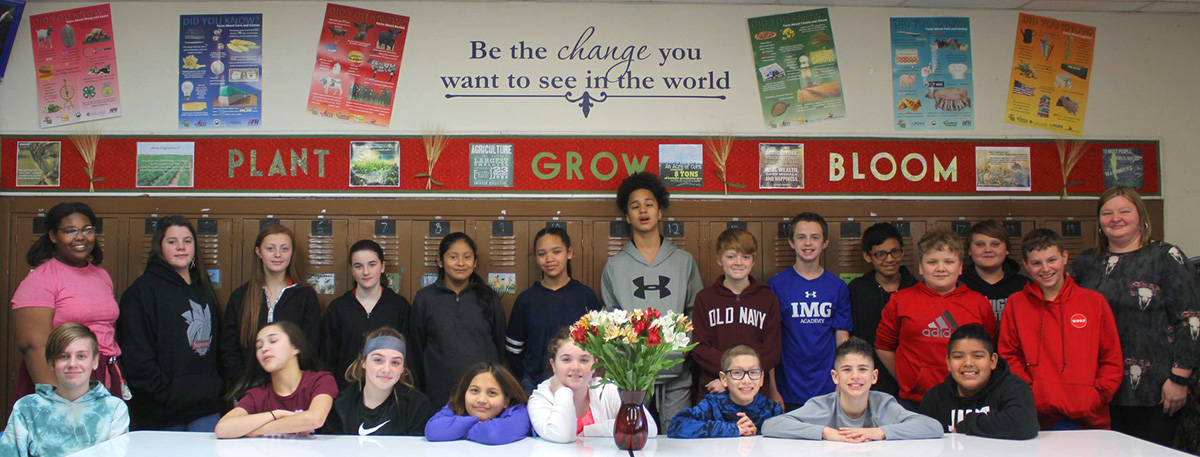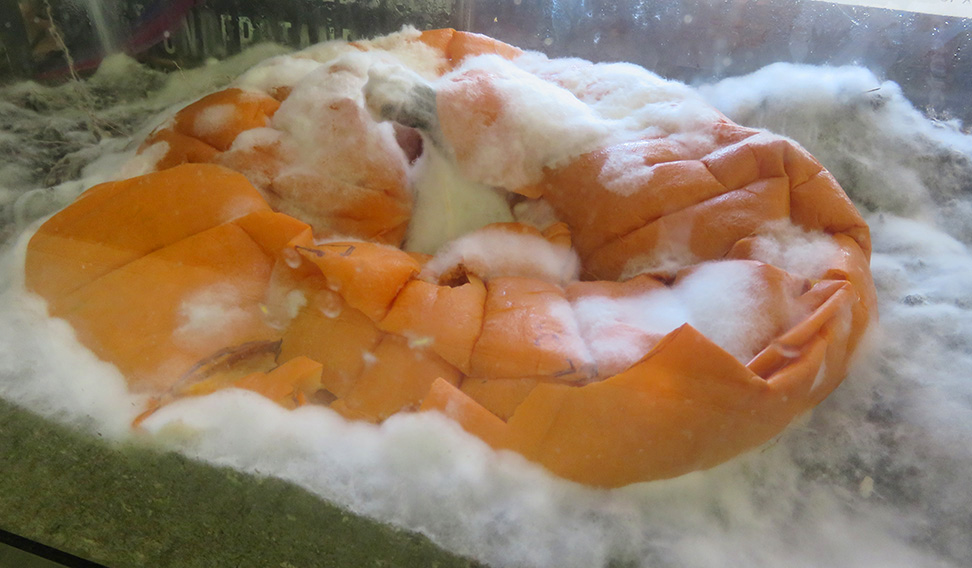Featured Teacher - June
Dusti McCartney, Willard 5th and 6th Grade Center, Ada
2019 AITC Teacher of the Year, Middle School Finalist

Sixth grade language arts was not where I imagined my teaching career beginning, but it is where fate led me. I began implementing Ag in the Classroom activities into my curriculum as extended learning activities when I needed a way to reteach and discovered that this program truly reached my students in a very personal way. They loved making potato stamps and analyzing the difference in the different ways products are presented to them. They continually asked for more.
At this point I knew I needed to seek out additional training to bring this program further into my curriculum. Ag in the Classroom presented a professional development at my school site that year and I was so excited to have new lessons and a great game to play in my classroom. Each year I applied to attend the road trip and attended the Oklahoma Ag in the Classroom summer conference and began adding more and more lessons into my curriculum. The need for agriculture education was making its presence know more than ever.
In my reading classes we often use the introductory literature from Ag in the Classroom lessons. These nonfiction pieces are the perfect blend of educational and engaging. Students enjoy reading about topics that are relevant and this makes the dreaded chore on nonfiction seem less daunting. Often times I find that I can pair Ag in the Classroom nonfiction texts with the fiction that we are studying. For instance, while reading Hatchet, we used literature from the lessons "Fish in a Bottle" and "Oklahoma Forests" to learn more about the environment in which the main character found himself stranded. Nonfiction Ag in the Classroom literature is a perfect addition to the reading classroom. This year, we also participated in National Read an Ag Book Day, and my students loved it so much, that we celebrated agriculture books the next day, too!

Carried on easily from reading into English, Ag in the Classroom lessons provide exceptional opportunities for a variety of writing tasks. While reading Hatchet, students, using the information "Oklahoma Forests" and their own research on Canadian Forests, complete a compare and contrast activity. The opportunity to use Ag in the Classroom in an English classroom adds engaging content and allows authentic learning to occur.
Science is easily the most effective place to do many of the Ag in the Classroom lesson hands on activities. Students are always ready for interactive segment of the lesson and are quickly engaged in learning. During the Hatchet unit, students designed habitats to resemble that from the book after looking at the "Fish in a Bottle" lesson example. Science and Ag in the Classroom complement each other perfectly when planning out a unit.

Nothing makes me happier than running into a former student and the first thing they update me on is how their plant that they started in my classroom is growing at their house, or how many bees they have seen in their bee house. The accessibility and adaptability of each Ag in the Classroom lesson makes it easy to implement, allowing students to take what they have learned and continue it outside of the classroom environment ensuring that the impact of the lessons are retained.

After this life altering year, I realized that Ag in the Classroom would forever be a priority in my classroom. I began with fervor to seek out learning opportunities. In the summer I attend the Oklahoma Ag in the Classroom road trip, was afforded the amazing opportunity through Oklahoma Ag in the Classroom to attend the National Ag in the Classroom conference, had a humbling opportunity to teach a session at the Oklahoma Ag in the Classroom summer conference, and attended breakout Ag in the Classroom sessions at OEIP and EngageOK.
I also sat down with our school counselor and we had a conversation about the possibility of my teaching science during the 2017-2018 school year so that I could implement more Ag in the Classroom and as a result had science added to my schedule. This went over so well that in the 2018—2019 school year I was given an additional science class to make room for the requests for students to be in my class. Ag in the Classroom is now paramount in my classes. Students are invested more than ever in their lessons because they are so relevant to their lives.
Ag in the Classroom makes not only a daily, but a lifelong impact on my students. They are amazed at how much agriculture plays a part in their lives each and every day. We start the year out looking at population growth and then compare it to agriculture land depreciation. Students are mesmerized by the counters and check them frequently. They learn about global agriculture and learn and share their knowledge. Journey 2050 provides a gateway game that they can play while learning. At this point students have bought into agriculture and its importance and we begin to look closer to home.
In my classroom, agriculture is not only introduced through traditional planned classroom instruction and inquiry, but also through presentation and research. Often, before I present a lesson, I lay the foundation by bringing items into the classroom that cause the students to begin observing and questioning practices. For example, before the lesson "Crickets on the Hearth," I began by placing an aquarium of crickets in the classroom on Monday. Students hypothesized each day as to what we would be doing on Friday for our "AGtivity." They discussed, without prompting from me, what impact crickets could have on agriculture. They researched possibilities and came up with a variety of ideas, from the crickets eating the crops, to cricket fighting (which is apparently popular in China). By Friday, when the lesson began, they had a solid foundation with which to begin the lesson. After we finished with the crickets, we added in rollie pollies and compared and contrasted their roles and how such small things could play roles in agriculture.
